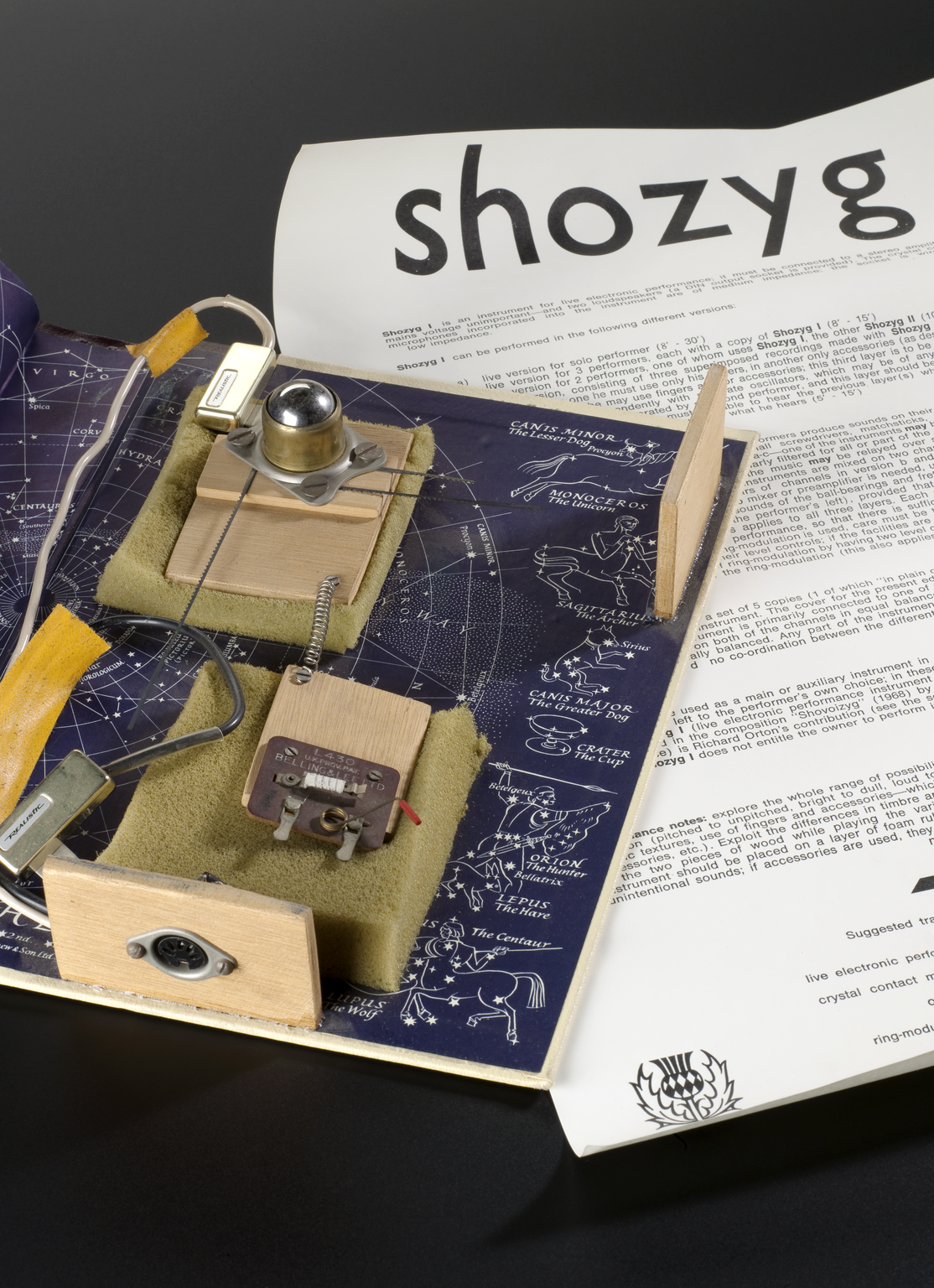Recently, one of my colleagues sent me this link to a small synthesizer hidden in a book.
The synthesiser is a bought piece of equipment, but it’s designed to be hacked and modified by whoever uses it and this particular owner probably had a good reason to keep it hidden. Or he just thought it would be fun to stick a synth in an old book.
Either way, this quirky instrument instantly reminded me of one of the objects in our collection: the Shozyg, invented and built by electro-acoustic musician Hugh Davies.

It is one of many electronic instruments designed by Hugh and made with unconventional materials. He called these instruments Shozygs. This is one of the first Shozygs Hugh made and, like the tiny synthesiser, it is also hidden in a book. It is built into a volume of the New World Library Knowledge Encyclopaedia covering words starting with the letters Sho- to Zyg-, to be precise. It inspired Hugh to come up with the quirky name Shozyg for this instrument and those that were to follow.
I’m not an expert when it comes to identifying electronic parts, but a surprising number of them seem strangely familiar to me when I look at the Shozyg. Squares of foam that could have been part of a sofa, blades of a fretsaw, a spring that looks very similar to the kind you find inside some pens.
Like so many other instruments I came across when working on our exhibition about the history of electronic music, it doesn’t look much like an instrument at all.

This made me wonder, what would the Shozyg have sounded like? After a bit of digging around I found this video of Hugh playing the Shozyg before it became part of the Science Museum’s collection.
After Hugh passed away, many of his instruments were given to the Science Museum by his widow. Sound recordings of his work can be found in the British Library.
Some of the Hugh Davies Collection is currently on display in our exhibition Oramics to Electronica: Revealing Histories of Electronic Music. I particularly like his toolbox. It reminds us that so many electronic musicians, past and present, use their creativity not only to play existing instruments, but also to imagine new ones. Whether you call it hacking or making do with what you’ve got, it’s certainly inspiring.
Oramics to Electronica: Revealing Histories of Electronic Music can be found on the second floor of the Science Museum until December 2012.